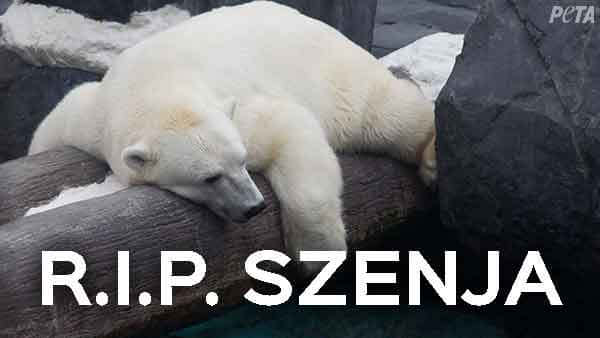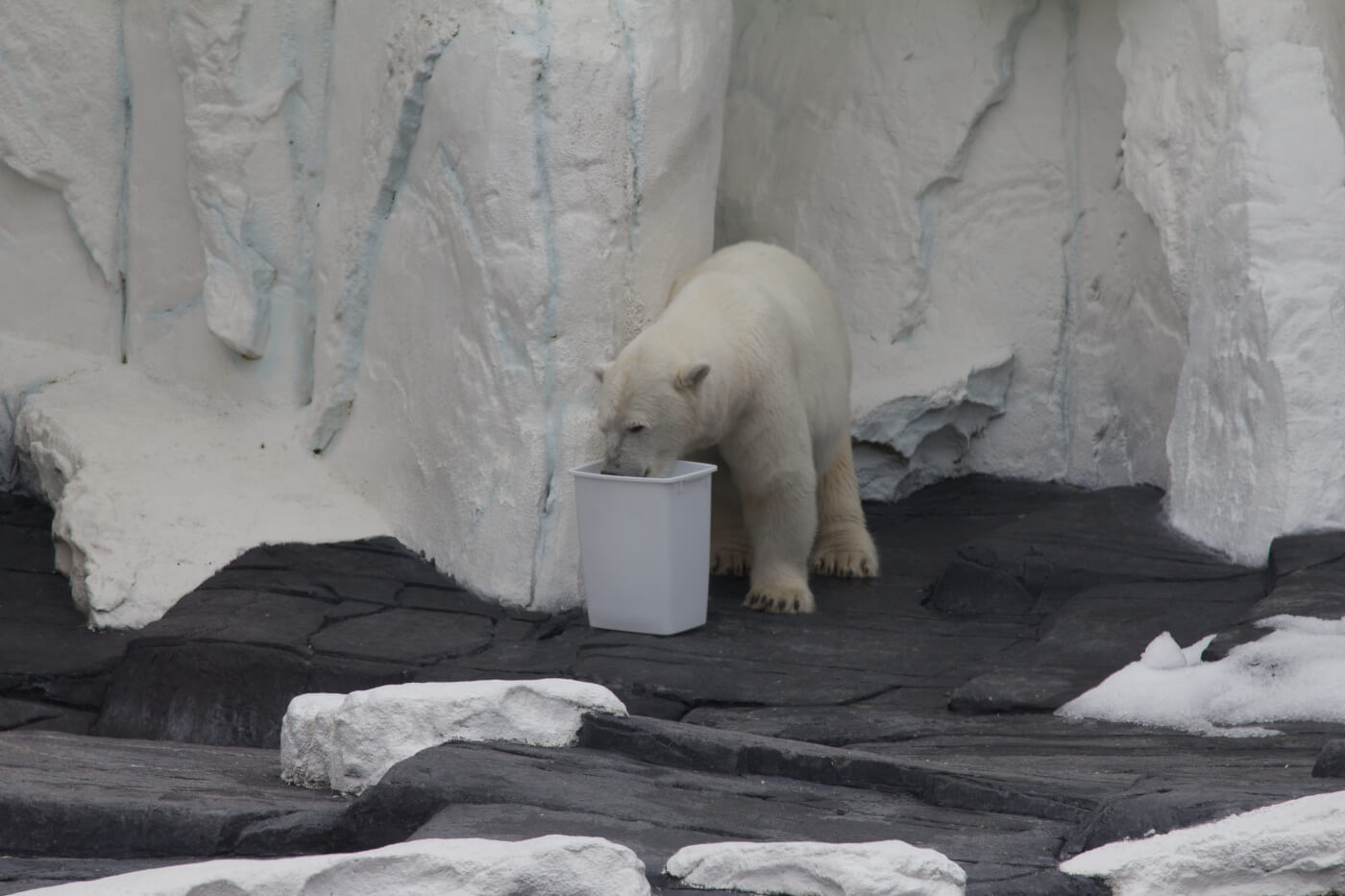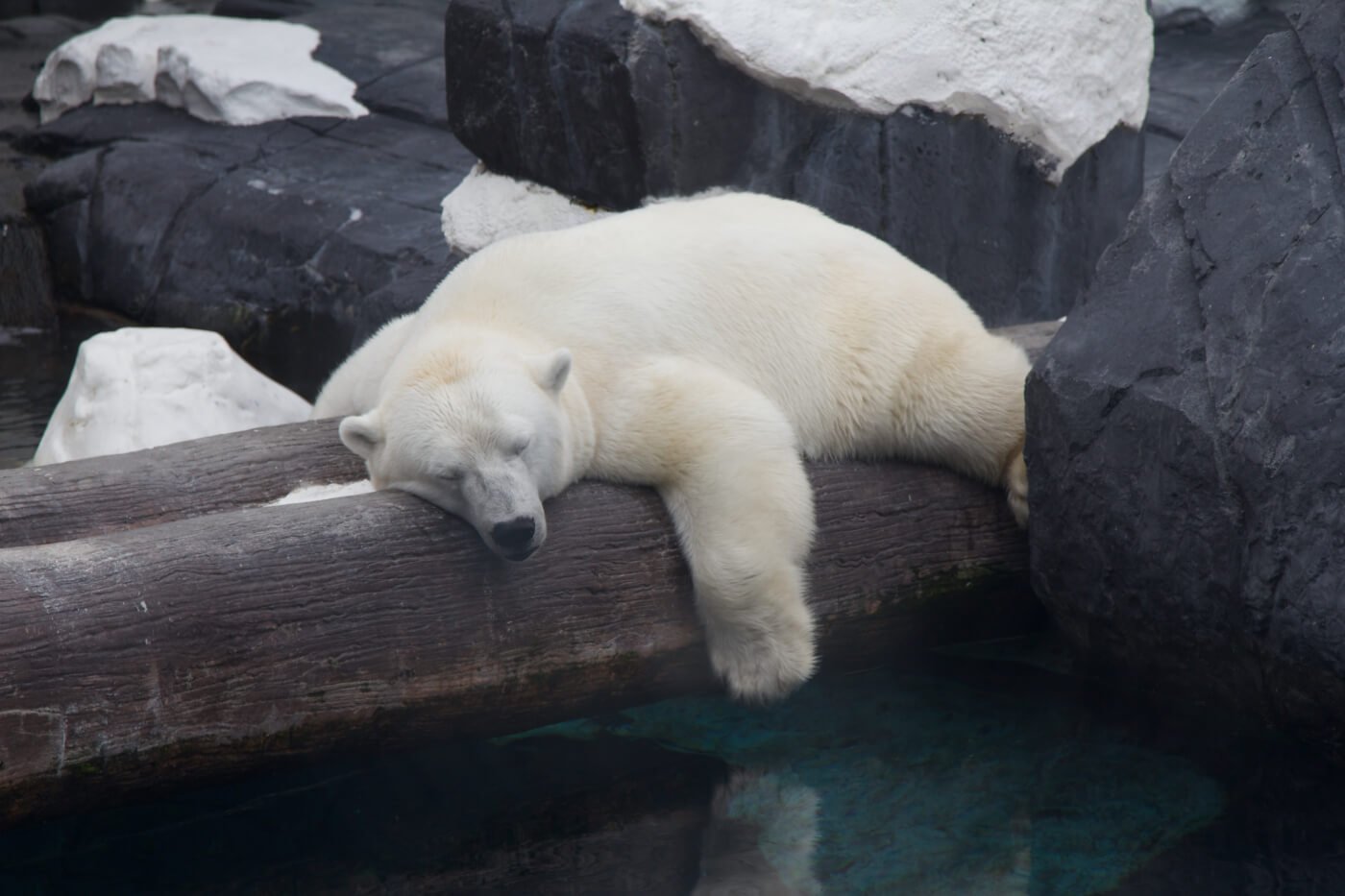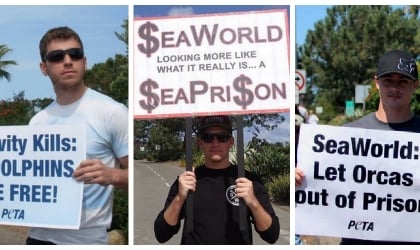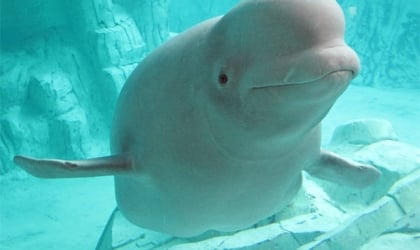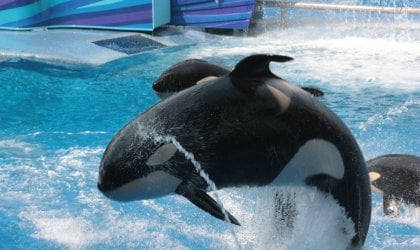UPDATE: Less than 3 months after PETA urged SeaWorld not to separate polar bears Szenja and Snowflake (and less than 2 months after SeaWorld did exactly that), one of the bears has died. Szenja, the bear left behind alone at SeaWorld’s San Diego park, died of a broken heart, PETA believes.
After losing her companion of 20 years when SeaWorld shipped Snowflake to the Pittsburgh Zoo in order to breed more miserable polar bears, Szenja did what anyone would do when they lose all hope, she gave up. This should be a wake-up call to SeaWorld: Stop breeding and shipping animals around, close the animal exhibits, and retire the animals to sanctuaries. Until it does, this ship will keep sinking.
Originally posted February 3, 2017
A concerned marine-mammal expert contacted PETA to let us know about SeaWorld‘s reported plan to separate polar bear best friends Snowflake and Szenja at its San Diego park. It wants to send Snowflake to the Pittsburgh Zoo in order to breed her for commercial purposes. That would leave Szenja, who has lived with Snowflake since 1997, without any companions of her own species. And of course, any resulting baby polar bears would be sentenced to a miserable existence in enclosures that are one millionth the size of their minimum home range in the wild. PETA rushed a letter to SeaWorld CEO Joel Manby urging him to stop the separation and attempted breeding.
Sources tell PETA that SeaWorld desperately wants a baby polar bear to showcase. Reportedly, the San Diego park is unable to obtain polar bears from the wild because neither Canada nor Alaska will give it orphaned cubs. The company apparently doesn’t meet the minimum standards prescribed by internationally recognized polar bear conservation laws. SeaWorld has tried to impregnate Snowflake several times, including in 2015 when she was drugged and forcibly inseminated.
SeaWorld is trying to sweep its true motive (having a baby at the park to attract visitors) under the rug while pretending to advocate “conservation.” But even if Snowflake’s baby survives—which is doubtful, given the 65 percent infant-mortality rate for captive polar bears—he or she will never be released into the wild. Conservation is about preserving natural habitats and protecting species in nature, not breeding more animals to live in a concrete box.
Meanwhile, the Pittsburgh Zoo dropped its Association of Zoos and Aquariums accreditation in 2015 because it refused to comply with the organization’s requirements for the safe handling of elephants. And in November 2016, it was cited for critical noncompliance with the federal Animal Welfare Act when a bat enclosure flooded, killing 36 bats.
PETA will continue to push SeaWorld not to add to these polar bears’ suffering and not to sentence more animals to a dismal fate by moving forward with this ill-conceived plan.
Learn more about cruelty at SeaWorld on The PETA Podcast:
Listen to more episodes on iTunes, Stitcher, and Spotify! Subscribe for new episodes.
Take action to keep SeaWorld from expanding to Abu Dhabi, China, and other locations around the world.

